Discover effective low-impact leg exercises designed to strengthen and tone without stressing the joints. Our “Low-Impact Leg Exercises” guide offers gentle yet impactful workouts for all fitness levels. Achieve stronger, healthier legs with our expert-approved low-impact routines.
Introduction
Overview of the Workout:
In this low-impact leg workout, we focus on exercises that are gentle on the joints but still effective in strengthening your legs. Throughout the session, we’ll be using 45-second work intervals to target various leg muscles. You’ll notice that we incorporate single-leg movements and bench exercises to provide a comprehensive workout for your lower body.
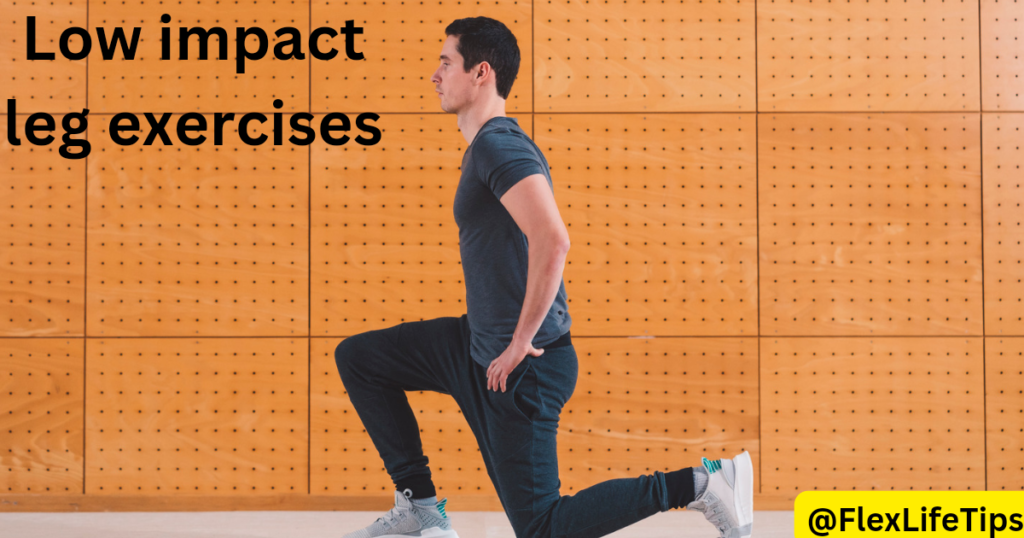
Importance of Low-Impact Exercises for Leg Strength:
Low-impact exercises are great for people of all fitness levels, especially those who may have joint issues or prefer a gentler workout. By avoiding high-impact movements like jumping or hopping, we can still achieve significant results while minimizing stress on the joints. These exercises help improve leg strength, stability, and endurance without causing unnecessary strain.
By incorporating these low-impact leg exercises into your routine, you can build muscle, improve flexibility, and enhance overall leg strength without risking injury. So let’s grab our bench and dumbbells and get started on this journey to stronger, healthier legs!
Warm-Up and Preparation
Starting with Wide Leg Bends: To begin our workout, we’ll start with wide leg bends. This involves bending and straightening one leg at a time while standing with our legs spread wide apart. This movement helps to loosen up the muscles in our legs and prepare them for the exercises ahead. It’s a gentle way to warm up and get the blood flowing to our lower body.
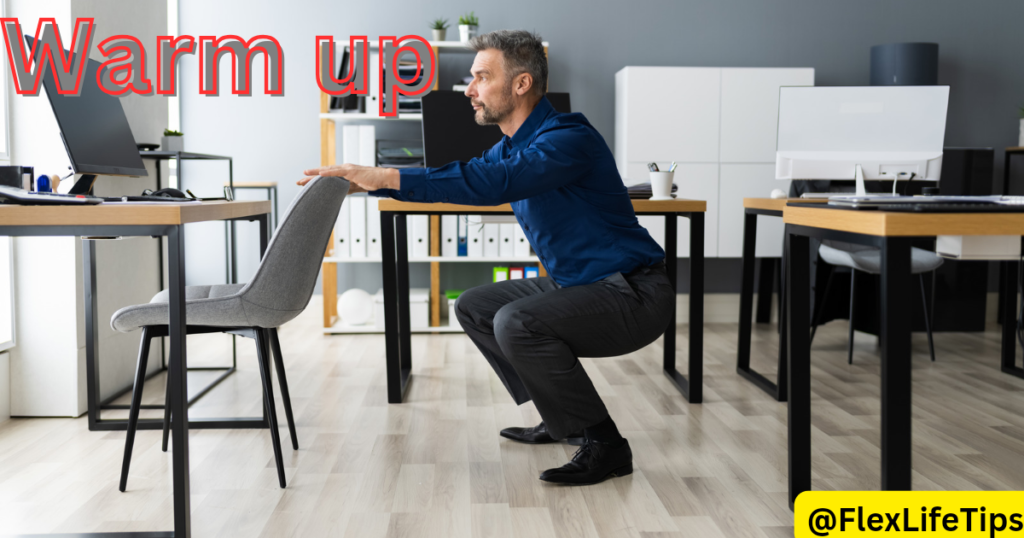
Explanation of 45-Second Work Intervals:
During this workout, we’ll be working in intervals of 45 seconds. This means we’ll perform each exercise for 45 seconds before taking a short 15-second break. Working in intervals like this helps to keep our workout structured and allows us to push ourselves for short bursts of time. It’s a great way to challenge ourselves while still being mindful of our limits.
Importance of Single Leg Movements:
Today, we’ll be focusing on single-leg movements, which are exercises that target one leg at a time. These movements are important for building balance, stability, and strength in each leg individually. By working on single-leg exercises, we can identify and address any muscle imbalances or weaknesses that may exist. Plus, they’re a great way to add variety to our workout routine and keep things interesting. So get ready to challenge yourself with some single-leg exercises and take your leg strength to the next level!
Bench Movements and Modifications
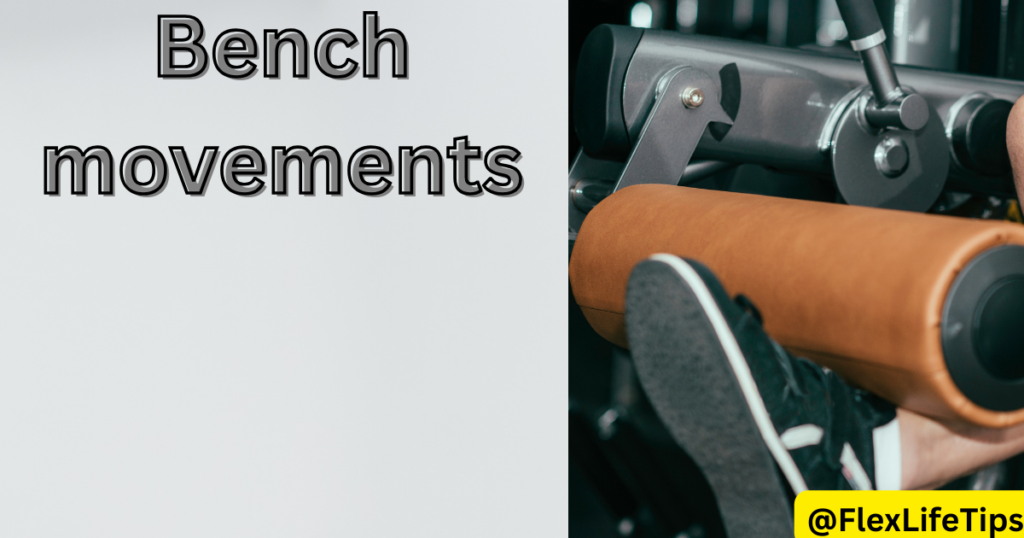
Incorporating Bench and Dumbbells:
For some of the exercises in our workout today, we’ll be using a bench and dumbbells. The bench provides a stable surface for certain movements, helping to support our body and maintain proper form. Dumbbells add resistance, making the exercises more challenging and effective for building strength in our legs. By incorporating these tools, we can target different muscles and maximize the benefits of our workout.
Demonstration of Bench Exercises:
Throughout the workout, you’ll see demonstrations of exercises that utilize the bench. These may include movements like step-ups, Bulgarian split squats, or seated leg lifts. Each exercise will be shown clearly, with instructions on how to perform them safely and effectively. Following along with these demonstrations will help you understand the proper technique and get the most out of each exercise.
Options for Modifying Movements:
If you’re new to exercising or have specific limitations, there are options available to modify the movements. For example, you can use lighter weights, reduce the range of motion, or perform fewer repetitions. Additionally, if you don’t have access to a bench, you can use a sturdy chair or even perform the exercises without any equipment. The important thing is to listen to your body and choose modifications that suit your individual needs and abilities. By making these adjustments, you can still participate in the workout and reap the benefits of low-impact leg exercises.
Main Exercises: Technique and Execution
Back Squat and Half Reps:
The back squat is a fundamental exercise for strengthening the legs. To perform it, stand with your feet shoulder-width apart, holding a dumbbell or barbell behind your head. Bend your knees and lower your body down as if you’re sitting back into a chair, keeping your back straight and chest up. Push through your heels to return to the starting position.
During the workout, we’ll also incorporate half reps into our back squats. This means lowering only halfway down before returning to the starting position. Half reps help to keep tension on the muscles and increase time under tension, leading to greater muscle growth and strength.
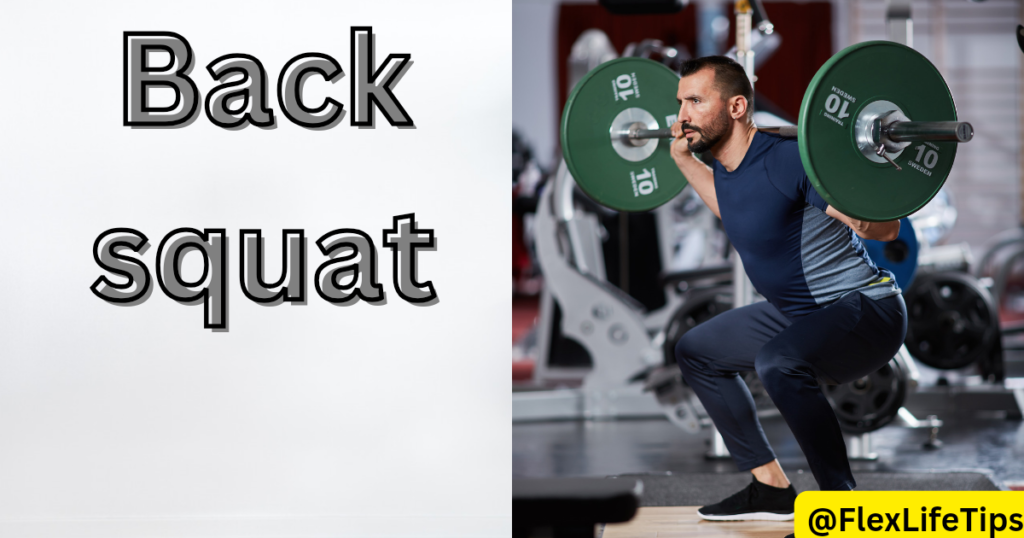
Lateral Lunge Glider:
The lateral lunge glider is another effective exercise for working the legs. To perform it, stand with your feet together and take a wide step to the side, bending one knee while keeping the other leg straight. Push off the bent leg to return to the starting position, then repeat on the other side.
Maintaining hip stability is crucial during lateral lunges to prevent injury and maximize effectiveness. Keep your hips square and facing forward throughout the movement, and focus on engaging the muscles of the outer thigh and glutes to push yourself back to the starting position.
RDL Sumo Squat Combo:
The RDL (Romanian Deadlift) and sumo squat combo is a challenging exercise that targets multiple muscle groups in the legs and glutes. To perform it, stand with your feet wider than shoulder-width apart, holding a dumbbell or kettlebell in front of your body. Hinge at the hips to lower the weight towards the floor, keeping your back straight and chest up. Then, push through your heels to return to a standing position, squeezing your glutes at the top.
Maintaining proper form and balance is essential during this exercise. Keep your back flat and chest lifted throughout the movement, and focus on driving through your heels to engage the muscles of the legs and glutes. Additionally, be mindful of your breathing and exhale as you lift the weight back to the starting position.
By mastering the technique and execution of these main exercises, you can effectively strengthen and tone your legs while minimizing the risk of injury. Remember to start with lighter weights and gradually increase as you become more comfortable with the movements.
Single Leg Circuit Work
Transition to Single-Leg Exercises:
As we move into the single-leg circuit, it’s important to understand the transition from bilateral (two-legged) to unilateral (single-legged) exercises. Single-leg exercises require greater balance and stability, engaging smaller stabilizing muscles to support the body. This transition challenges our coordination and helps improve overall functional strength.
Left Leg Bodyweight Squats:
One of the exercises in this circuit is the left leg bodyweight squat. Stand on your left leg with your right foot lifted slightly off the ground. Bend your left knee and lower your body down into a squat position, keeping your chest up and core engaged. Push through your left heel to return to the starting position.
Focus on Hip Positioning and Stability:
Maintaining proper hip positioning and stability is key during single-leg exercises. Keep your hips level and avoid letting one hip drop lower than the other. This helps to prevent injury and ensures that both legs are working evenly to support your body weight.
Progression Options for Bodyweight Squats:
For those looking to progress the left leg bodyweight squats, there are several options available. You can increase the depth of the squat, extend the duration of each repetition, or hold onto support for balance if needed. As you become stronger and more confident, you can gradually decrease your reliance on assistance and challenge yourself further.
Benefits of Single Leg Work for Muscular Symmetry:
Engaging in single-leg exercises helps to address muscular imbalances and promote muscular symmetry. By working on each leg individually, we can identify and correct any weaknesses or asymmetries that may exist. This not only reduces the risk of injury but also improves overall athletic performance and functional movement patterns.
Incorporating single-leg exercises into your workout routine can lead to greater strength, stability, and balance in your lower body. So don’t be afraid to challenge yourself with the left-leg bodyweight squats and other single-leg movements in this circuit!
Bulgarian Split Squats and Variations
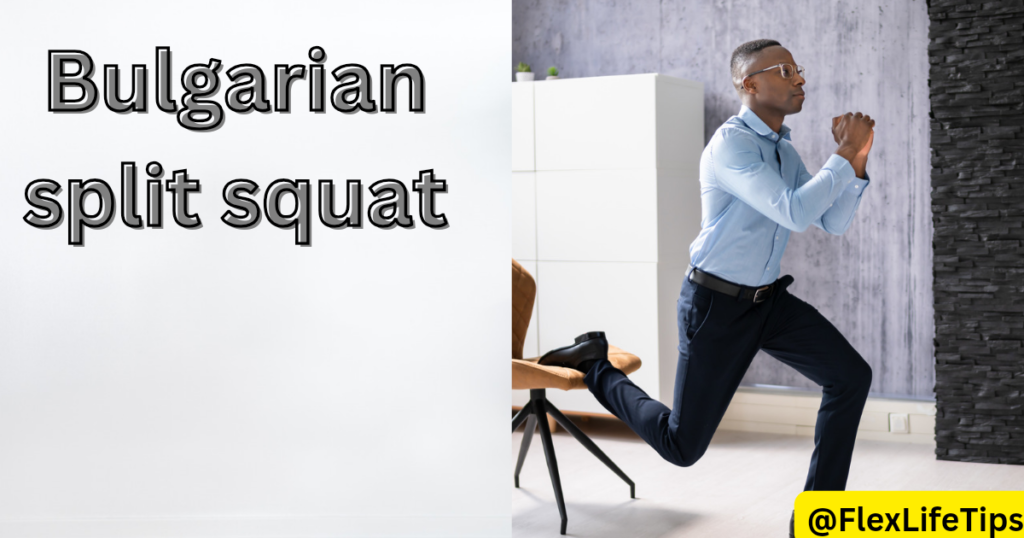
Explanation of Split Squat Technique:
The Bulgarian split squat is a powerful exercise for strengthening the legs, particularly the quadriceps, hamstrings, and glutes. To perform this exercise, start by standing a few feet in front of a bench or box. Place one foot on the bench behind you and the other foot flat on the ground in front of you. Lower your body down into a lunge position, keeping your front knee aligned with your ankle and your back knee hovering just above the ground. Push through your front heel to return to the starting position.
Utilizing Bench or Box for Stability:
Using a bench or box for stability during Bulgarian split squats can help you maintain proper form and balance. The bench provides a target for your back foot, ensuring that it stays elevated and stable throughout the exercise. This stability allows you to focus on engaging your front leg muscles and driving through your heel to lift yourself back up.
Options for Adding Intensity or Difficulty:
There are several ways to increase the intensity or difficulty of Bulgarian split squats. One option is to hold onto a pair of dumbbells or kettlebells to add resistance to the exercise. You can also elevate your front foot on a higher surface to increase the range of motion and engage your muscles more deeply. Additionally, you can perform the exercise at a slower tempo or incorporate pauses at the bottom of the movement to challenge your muscles in different ways.
By mastering the technique of Bulgarian split squats and exploring variations that suit your fitness level, you can effectively strengthen and tone your legs while improving balance and stability. So grab a bench or box, and let’s start sculpting those strong, powerful legs!
Hamstring Curl Finisher and Cool Down
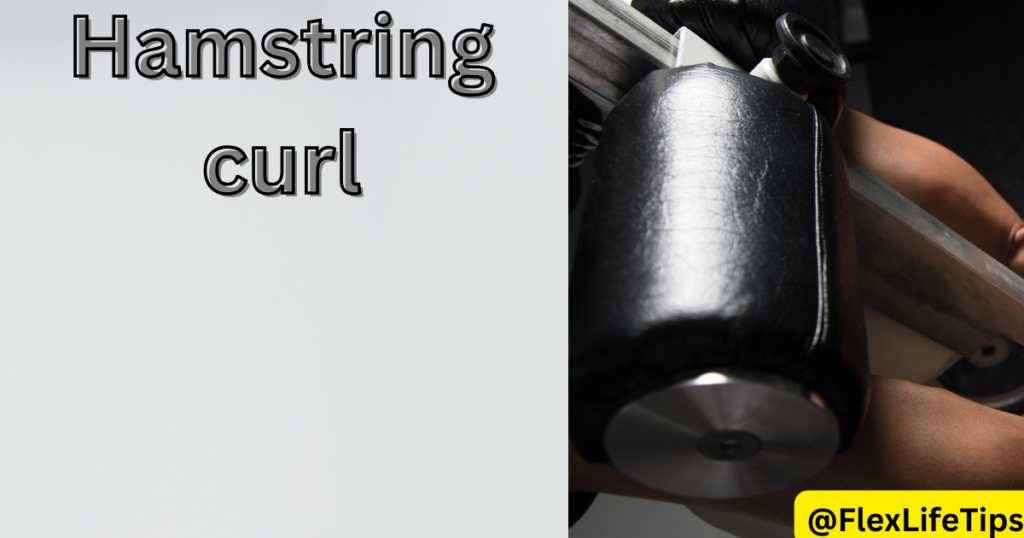
Introduction to Hamstring Curl Exercise:
The hamstring curl is a fantastic exercise for targeting the muscles in the back of your thighs, known as the hamstrings. To perform this exercise, lie on your back with your knees bent and your feet flat on the ground. If you have access to a dumbbell, you can place it between your feet for added resistance. Then, lift your hips off the ground and engage your core as you curl your heels towards your glutes, squeezing your hamstrings at the top of the movement. Lower your hips back down to the starting position with control.
Equipment Options and Substitutions:
If you don’t have access to a dumbbell, don’t worry! You can still perform hamstring curls effectively using just your body weight. Alternatively, you can use a resistance band looped around your feet for added resistance. The key is to focus on contracting your hamstrings as you lift your heels toward your glutes, regardless of the equipment you’re using.
Cool Down and Importance of Stretching:
After completing the hamstring curl finisher, it’s essential to take some time to cool down and stretch your muscles. Stretching helps to reduce muscle tension, improve flexibility, and prevent soreness. Focus on stretching the muscles you worked during the workout, including your hamstrings, quadriceps, calves, and hips. Hold each stretch for 15-30 seconds and remember to breathe deeply as you relax into each position.
By incorporating the hamstring curl exercise into your workout routine and prioritizing proper cool-down and stretching techniques, you can enhance muscle strength, flexibility, and overall leg health. So take a moment to unwind and stretch out those hardworking muscles—you deserve it!
Understanding Muscle Definition and Tone
Clarifying Fitness Terminology:
When we talk about fitness, certain terms can be confusing. One of these terms is “muscle definition.” Muscle definition refers to the visibility of muscles under the skin. It’s what gives athletes that toned, sculpted look. Another term is “muscle tone.” Muscle tone refers to the level of tension in a muscle at rest. Good muscle tone means your muscles are firm and ready to work when needed. Both muscle definition and muscle tone are important aspects of physical fitness.
Importance of Building Muscle for Definition:
Building muscle is crucial for achieving muscle definition and tone. When you engage in strength training exercises like squats, lunges, and weightlifting, you create tiny tears in your muscle fibers. As these tears repair themselves, your muscles become stronger and more defined. Additionally, having more muscle mass can boost your metabolism, helping you burn more calories at rest and maintain a healthy weight.
Role of Nutrition in Achieving Fitness Goals:
While exercise is important for building muscle, nutrition plays a key role as well. To fuel your workouts and support muscle growth, it’s essential to eat a balanced diet rich in protein, carbohydrates, and healthy fats. Protein is especially important for muscle repair and growth, so be sure to include sources like lean meats, eggs, dairy, and legumes in your meals. Additionally, staying hydrated and getting enough rest is vital for recovery and overall health.
By understanding these concepts and incorporating them into your fitness routine, you can work towards achieving your goals of muscle definition and tone. Remember to focus on both strength training exercises and proper nutrition to maximize your results and feel your best inside and out.
10 low-impact leg exercises
- Chair Squats: Start by sitting in a chair and standing up, then lower back down. This exercise strengthens the quadriceps, hamstrings, and glutes.
- Leg Raises: Lie on your back and lift one leg towards the ceiling, then lower it back down. Switch legs and repeat. This targets the hip flexors and lower abdominal muscles.
- Standing Hip Abductions: Stand tall and lift one leg out to the side, then lower it back down. Repeat on the other side. This exercise works the outer thighs and glutes.
- Wall Push-offs: Stand facing a wall and lift one leg off the ground, then lightly tap it against the wall before returning it to the ground. Switch legs and repeat. This exercise targets the calf muscles and improves ankle stability.
- Seated Leg Press: Sit on a chair with your feet flat on the ground. Push one foot against the other as if you’re pressing against a resistance, then switch sides. This exercise strengthens the quadriceps and calves.
- Standing Hamstring Curls: Stand tall and bend one knee, bringing your heel towards your glutes. Lower it back down and repeat on the other side. This targets the hamstrings.
- Calf Raises: Stand with your feet hip-width apart and lift your heels off the ground, then lower them back down. This exercise strengthens the calf muscles.
- Seated Inner Thigh Lifts: Sit on a chair with your feet flat on the ground. Place a small ball or pillow between your knees and squeeze your knees together, then release. This works the inner thigh muscles.
- Heel Slides: Lie on your back with your knees bent and feet flat on the ground. Slide one heel along the floor towards your glutes, then extend it back out. Repeat with the other leg. This exercise targets the hamstrings and glutes.
- Resistance Band Leg Press: Sit on a chair with a resistance band wrapped around one foot. Press your foot against the band, then release. Switch legs and repeat. This exercise strengthens the quadriceps and calves.
Conclusion:
In conclusion, incorporating low-impact leg exercises into your fitness routine can offer a multitude of benefits for both beginners and seasoned athletes alike. By focusing on movements that are gentle on the joints while still providing effective muscle engagement, such as those demonstrated in this article on “Low-Impact Leg Exercises,” individuals can improve leg strength, stability, and overall lower body function without risking injury.
These exercises offer a versatile approach to leg training, utilizing tools like benches, dumbbells, and body weight to target various muscle groups while minimizing stress on the joints. From wide leg bends to Bulgarian split squats and hamstring curls, there are plenty of options to choose from based on individual fitness levels and goals.
How do you tone your legs with low impact?
To tone your legs with low impact, focus on exercises that engage the leg muscles without putting excessive stress on the joints. Examples include bodyweight squats, lunges, step-ups, calf raises, and leg lifts. You can also incorporate resistance bands or light weights for added intensity.
How do I tone my legs with bad knees?
If you have bad knees, it’s important to choose low-impact exercises that minimize stress on the knee joints. Opt for exercises like swimming, cycling, water aerobics, and seated leg exercises. Additionally, focus on strengthening the muscles surrounding the knees, such as the quadriceps, hamstrings, and glutes, to provide better support and stability.
Is 30 minutes of leg day enough?
Thirty minutes of dedicated leg exercises can be sufficient for a leg day workout, especially if you focus on high-intensity exercises and proper form. However, the effectiveness of your workout also depends on factors such as the intensity of your exercises, the number of sets and repetitions, and your individual fitness goals.
Can you build leg muscle without weights?
Yes, you can build leg muscle without weights by incorporating bodyweight exercises and resistance training techniques. Exercises like squats, lunges, calf raises, and leg lifts can effectively target and strengthen the leg muscles. Additionally, using resistance bands, ankle weights, or performing exercises with slow and controlled movements can provide added resistance for muscle growth.
Can saggy legs be toned?
Yes, saggy legs can be toned through a combination of strength training exercises, cardiovascular exercise, and proper nutrition. Strength training exercises that target the leg muscles, along with overall body toning exercises, can help tighten and firm saggy legs over time. Additionally, maintaining a healthy diet and staying hydrated can support muscle growth and improve skin elasticity.
Does walking tone your legs?
Yes, walking can help tone your legs, especially when done consistently and at a brisk pace. Walking engages the muscles in the legs, including the quadriceps, hamstrings, calves, and glutes, which can lead to improved muscle tone and definition over time. Incorporating inclines or walking uphill can further challenge the leg muscles and enhance the toning effect.
